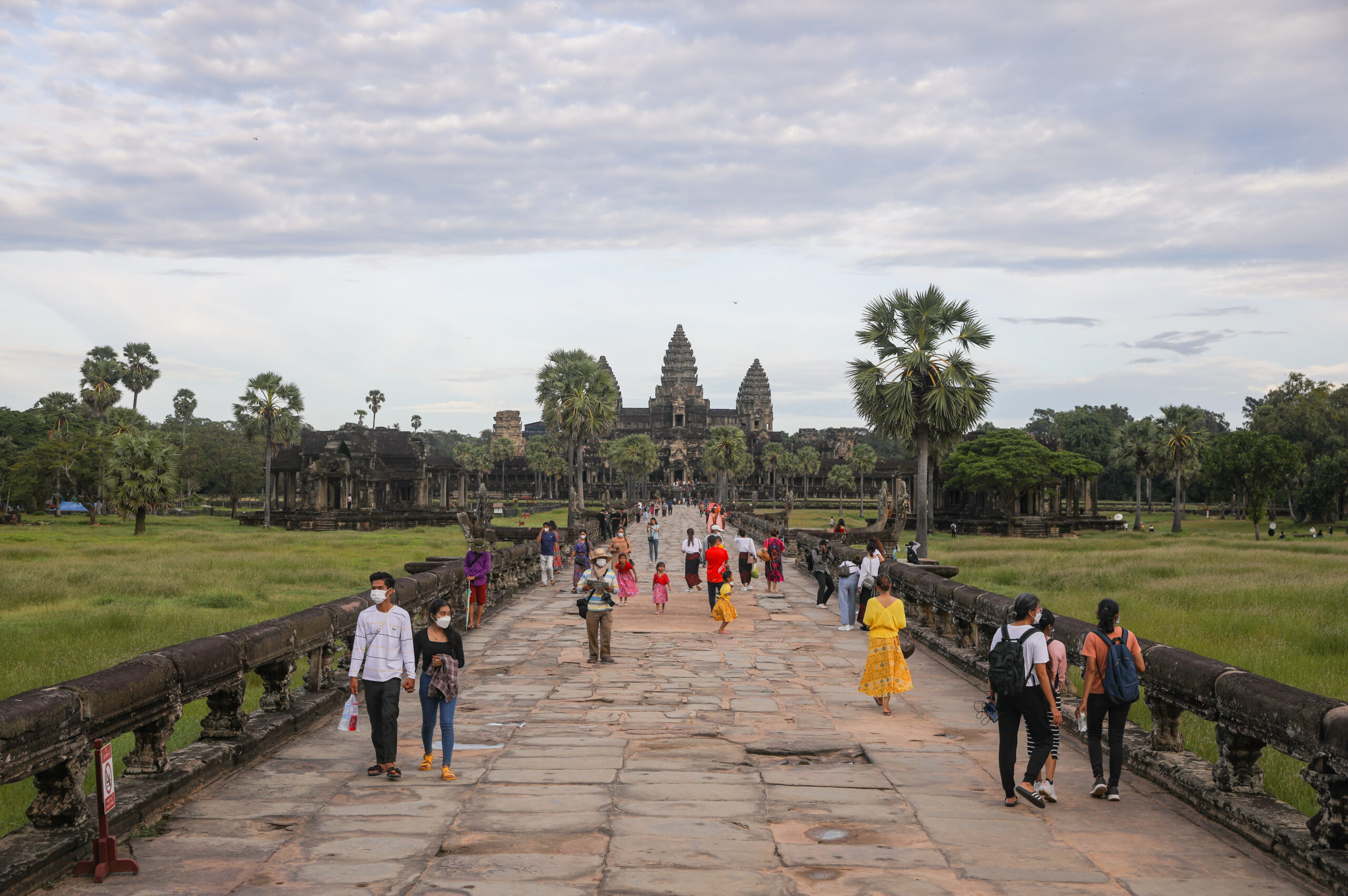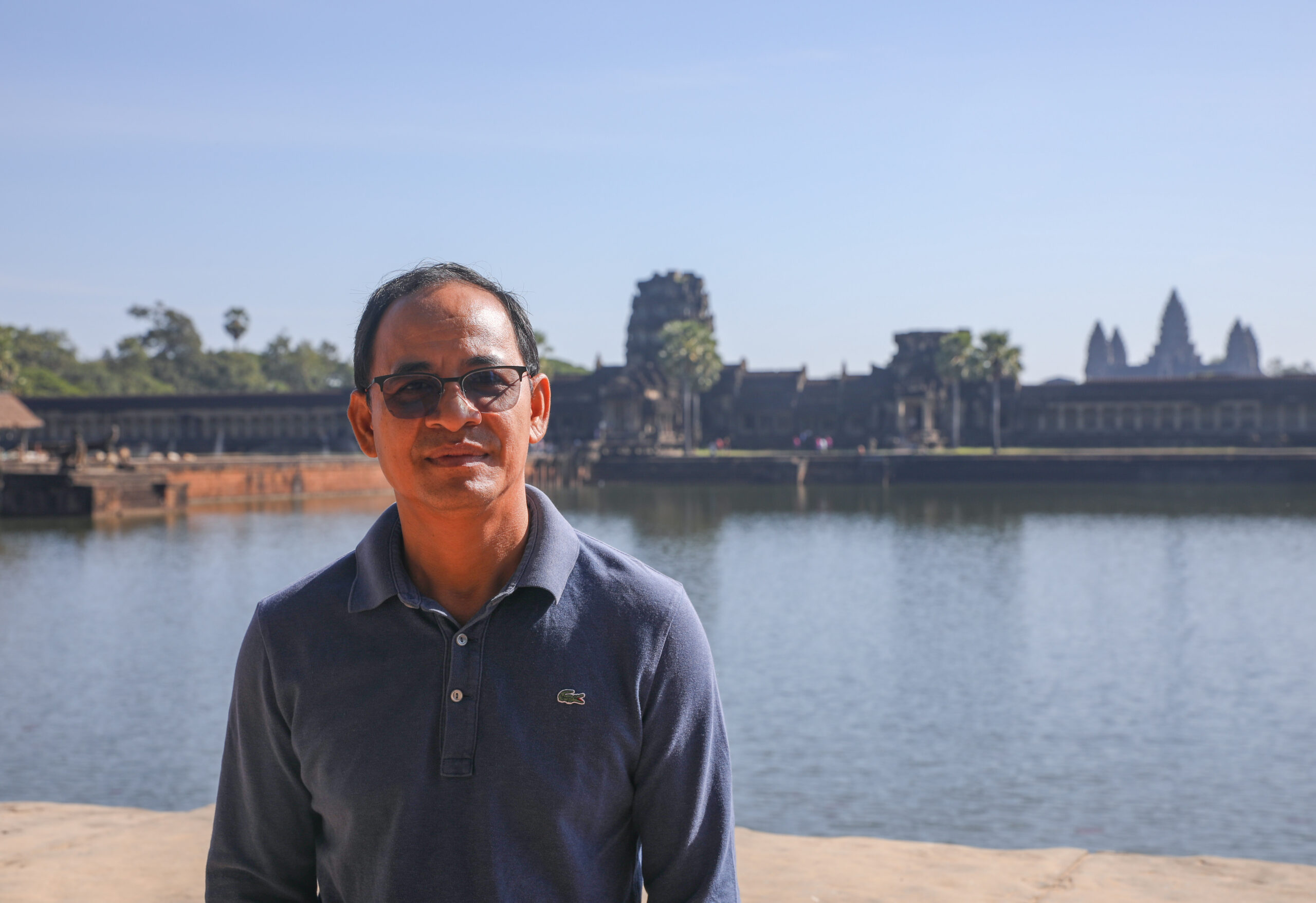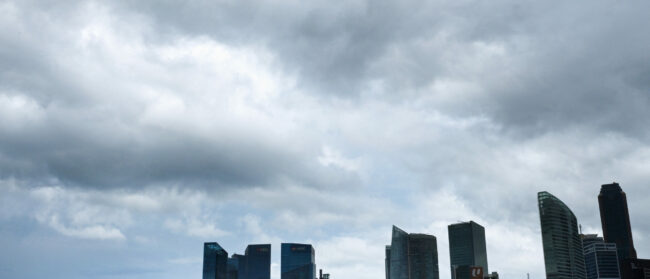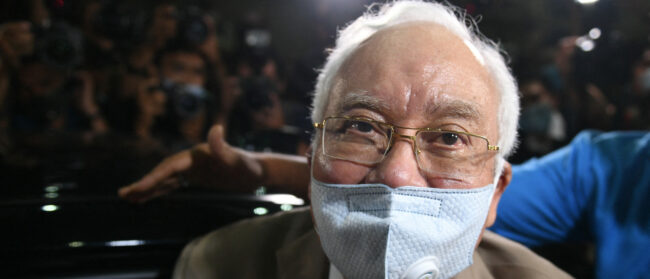There is not a line in sight at Angkor Wat.
With Covid-19 pandemic restrictions limiting international tourists over the last few months, the archaeological park has been in a state of relative calm with mostly domestic visitors.
Spanning more than 400 square kilometres (154 square miles), Angkor Wat is considered one of the most important archaeological sites in Southeast Asia.
The United Nations Educational, Scientific and Cultural Organization (UNESCO) inscribed Angkor Wat on its list of World Heritage Sites on 14 December 1992. The site was originally listed as “in danger” but after years of conservation the designation was downgraded in 2004.
Cambodia has three World Heritage Sites: the Temple of Preah Vihear, the Sambor Prei Kuk Temple Zone and Angkor Archaeological Park, which in 2021 marked its 29th year as a heritage site.
As Covid-19 pandemic regulations loosen and vaccinated tourists are welcomed back to the Kingdom, the Cambodian organisation responsible for managing Angkor Archaeological Park, APSARA National Authority, prepares for the anticipated influx of visitors.
Southeast Asia Globe spoke with Long Kosal, APSARA deputy director-general, to discuss how the park has changed since the start of the pandemic and what tourists can expect when visiting in 2022.
During a conversation and site visit, Kosal explained a new tourist management plan being implemented in certain temples and showed the Globe several ongoing restoration sites nearing completion.
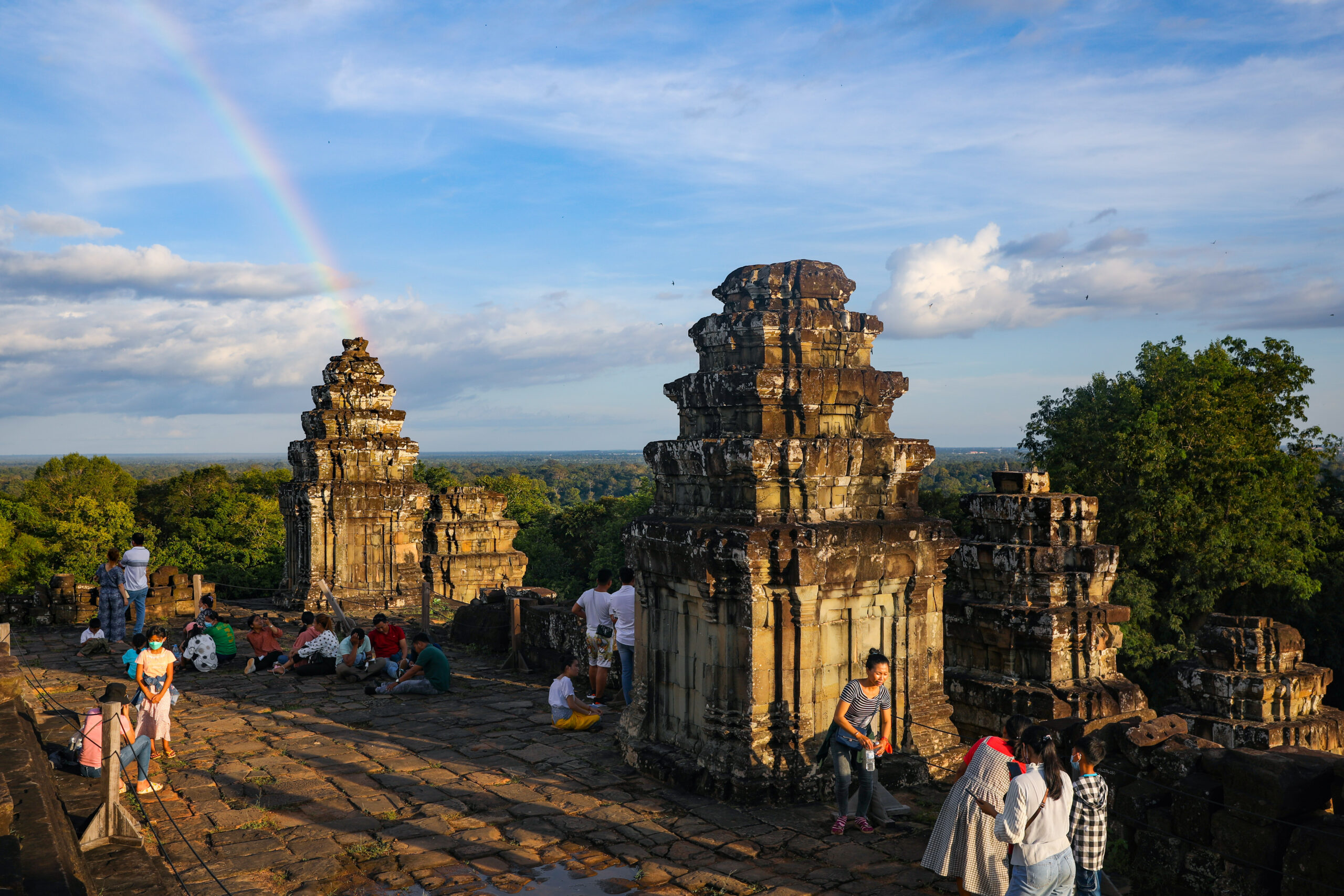
How did the pandemic affect conservation and preservation projects around the park?
It was a time which was very challenging, but we turned those challenges into opportunities. That is why we took the time where there were very few tourists in the park to get some work done and some of that work was extraordinary.
We were able to find discoveries that had never been recorded before. Among those were the findings of a wooden structure resembling a milk churn in the middle of the northern pond and the discovery of ancient structures buried at Lolei Temple.
Besides these discoveries, we were able to rehabilitate parts of Srah Srang Temple and the Elephant Terrace at Angkor Thom, as well as repair some of the road networks within the park. We also created 23 kilometres [14.3 miles] of cycling paths, which has never been done before. This new path is on a completely separate route, which allows tourists to have a completely new experience.
With the number of international visitors dropping the year before the Covid-19 pandemic, do you believe Angkor Wat has retained its interest as a tourist destination? Do you expect to see an increase in foreign visitors?
With the listing of Angkor Wat as a World Heritage Site and as one of the seven World Wonders, I believe there are many people from around the world who would like to visit Cambodia and see the temples for themselves.
While I believe we are on the right path to reopening, perhaps tourists might not be able to come just yet because there are still a lot of arrangements and safety measures that need to be in place for hotels, tour companies and of course sites. By the turn of 2022, however, I think we will begin to see a growth in visits.
What steps are you taking to prepare for this expected increase in visitors?
At each temple, we have teams in place to ensure all the people entering have a mask and are socially distanced from one another. The high-risk areas for Covid infections are at these temples. We have been doing a lot of work to ensure public safety by developing a new circuit system that we are putting into place as part of a “Tourist Management Plan.”
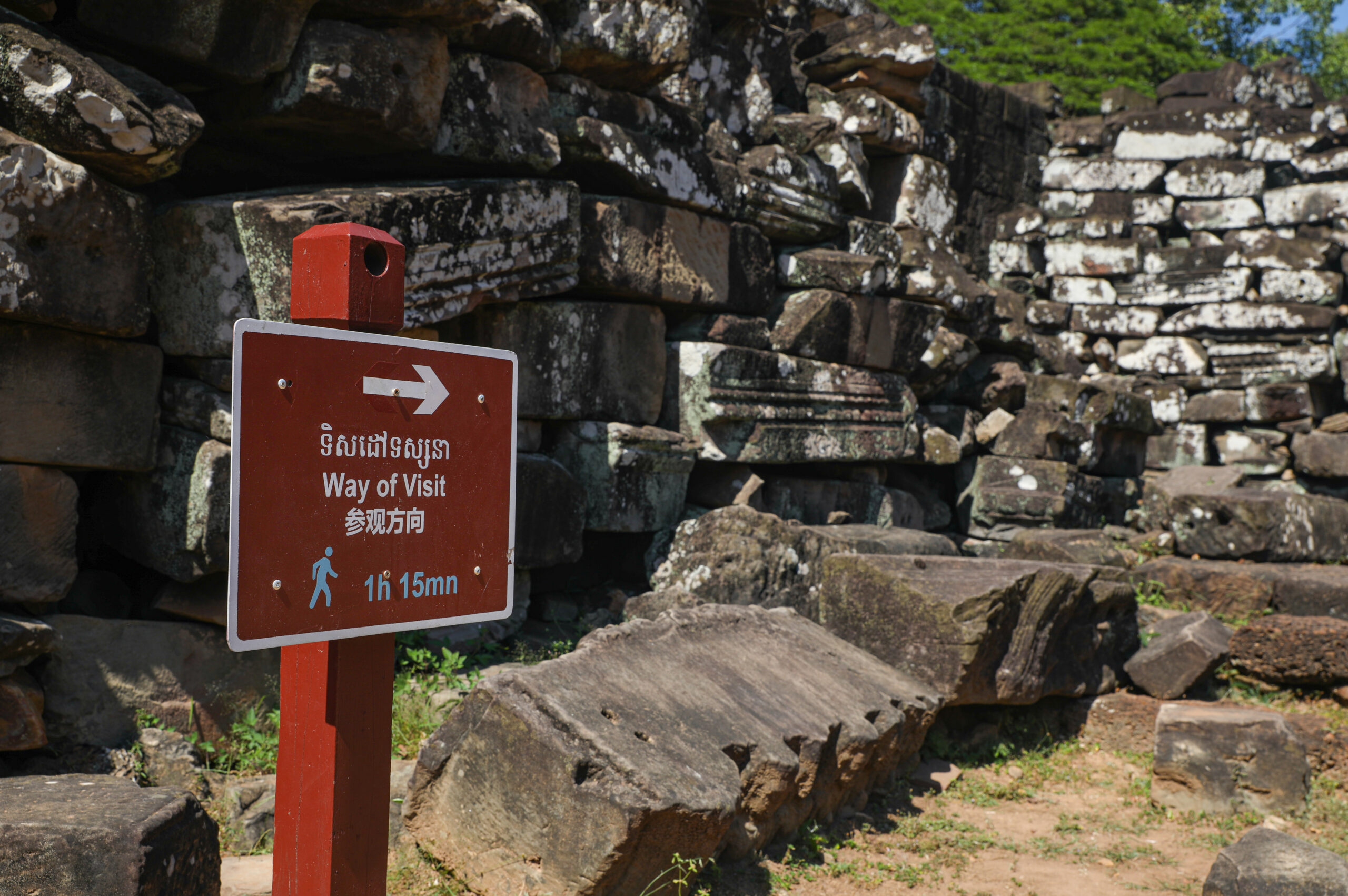
How would you explain the circuit system to visitors?
The circuit is meant to ensure a better flow of tourists. Without this tourist flow management measure, we would just have visitors roaming around, which would cause a lot of concern because of Covid. The circuit is being put into place so we can know how many tourists are in each enclosed space and properly help them proceed from one site to another with the correct social distance. This is perhaps our most important Covid precaution.
We’ve been studying different circuit options in each temple. For example, in Angkor Wat we are thinking of having three options with the longest circuit lasting an hour, then the middle circuit lasting 45 minutes and the last only 30 minutes. We are trying to provide as many options as possible so that tourists can enjoy the temples at their own pace, but still in a way that ensures their safety.
Will the circuit system affect Cambodians visiting Angkor Park?
We cannot differentiate between domestic tourists and international tourists. They are all tourists, therefore they will all have to follow the circuit and the precautions we have prepared. Cambodians will need to follow the new circuit system just like international tourists.
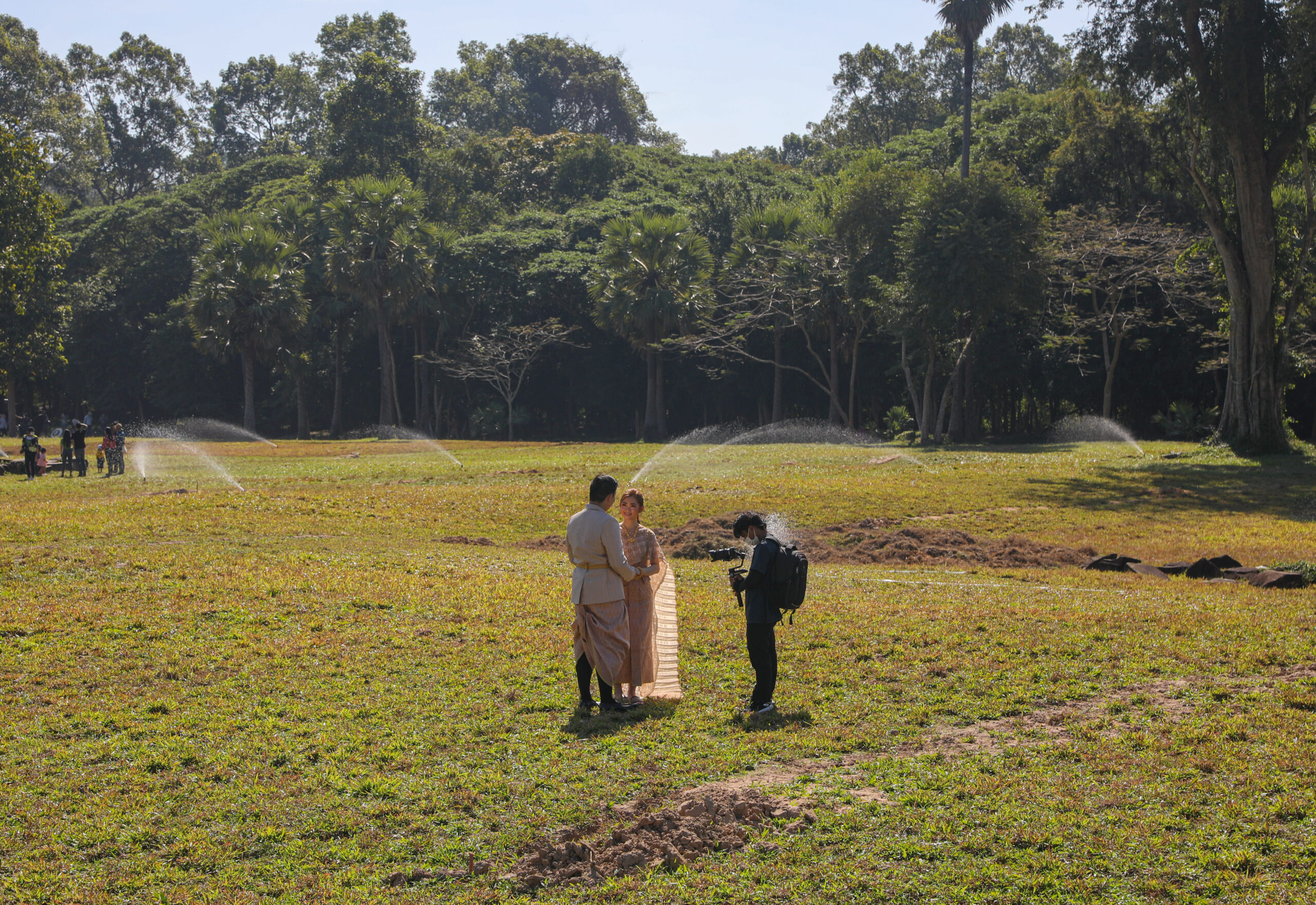
How will the circuit affect popular traditions among Cambodians, like pre-wedding photoshoots?
We are still in the process of figuring out the details, but like everyone else couples will be expected to follow the circuit. Registration and approval of pre-wedding photoshoots is already in place, so we are considering expanding that process. We understand that this is one of the most important moments for that couple and we are so happy to be a part of it. We just need to find a way that we can be a part of it that is safe.
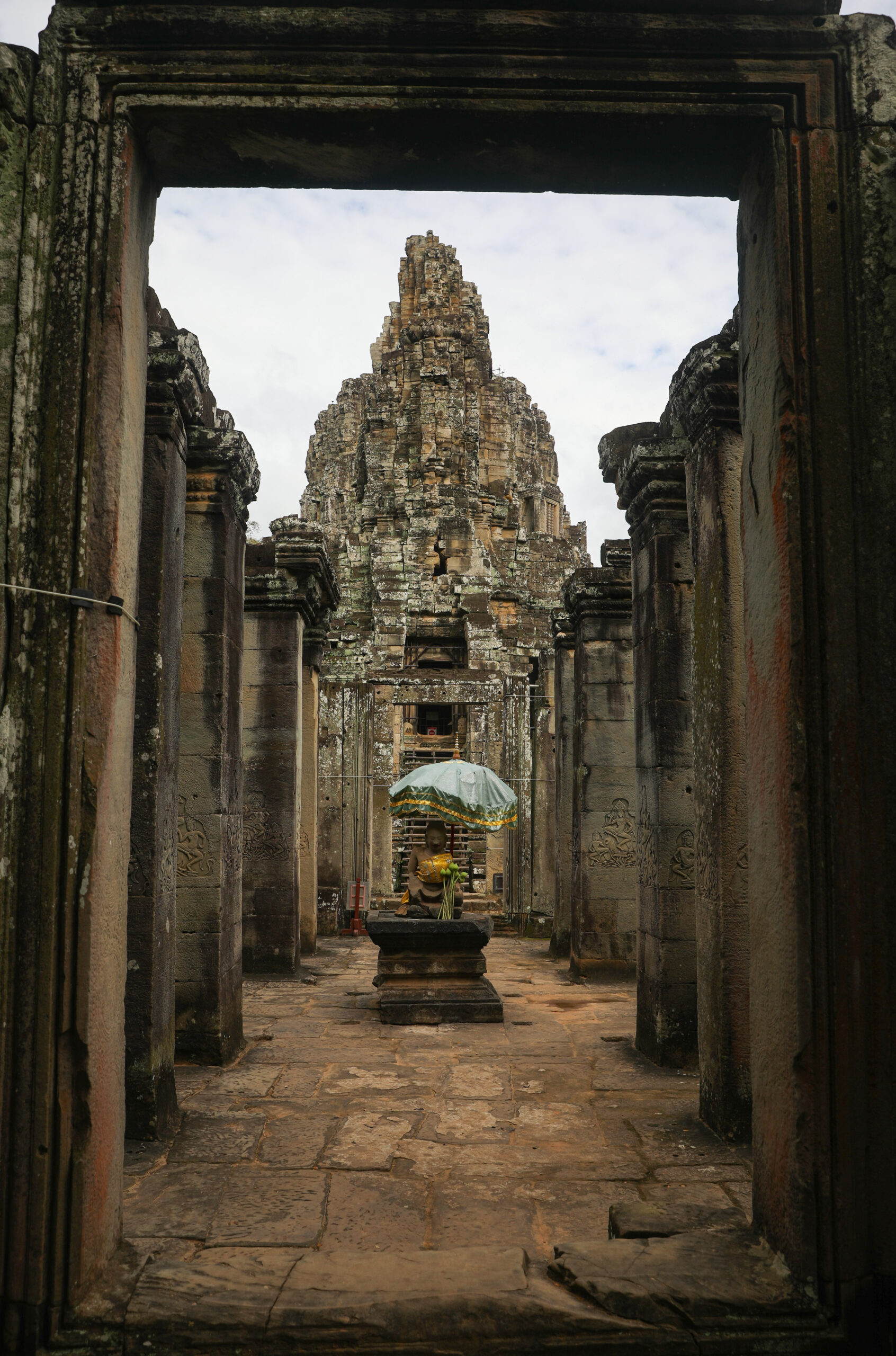
When will the circuit system be implemented?
We have a pilot program ongoing now in Bayon Temple, which I believe is a good step forward. We are going to see how that goes before announcing more details, but I believe we will be publicizing the circuit very soon.
How is the pilot program at Bayon Temple going?
We started the pilot in December, it is still very new. There are details we need to figure out and it will take time to implement similar circuits in every temple, but this is a good start.
At Bayon Temple, we are offering three circuits starting from the east entrance. The longest option is marked yellow and takes 105 minutes. The second option, blue, takes 75 minutes and third, green, takes 55 minutes. We have signs around the temple showing the path of each circuit and every circuit has a few good photo spots. So far, we haven’t had any problems with the few visitors we have.
Will these precautions only be enforced while the pandemic is an issue? Or is this the new normal in Angkor Park?
This is here to stay. We are not enforcing these new rules because we just thought of them. This is all part of a master plan and this was always one of the steps we were planning on taking. The timing is just a coincidence that Covid is still an issue. This is a plan that is meant to strategically help us improve tourism activities at Angkor.
What is the significance of Angkor Wat’s designation as a World Heritage Site?
Having a World Heritage Site is a privilege and an honour for Cambodia. These temples are a gem, a crown jewel, in the Southeast Asian mainland. This site is very significant and we all have to preserve this as a treasure for humankind. We have to keep this legacy of the past alive so younger generations will also be able to appreciate it. Especially younger generations of Cambodians, because it is very important they understand where their roots stem from.
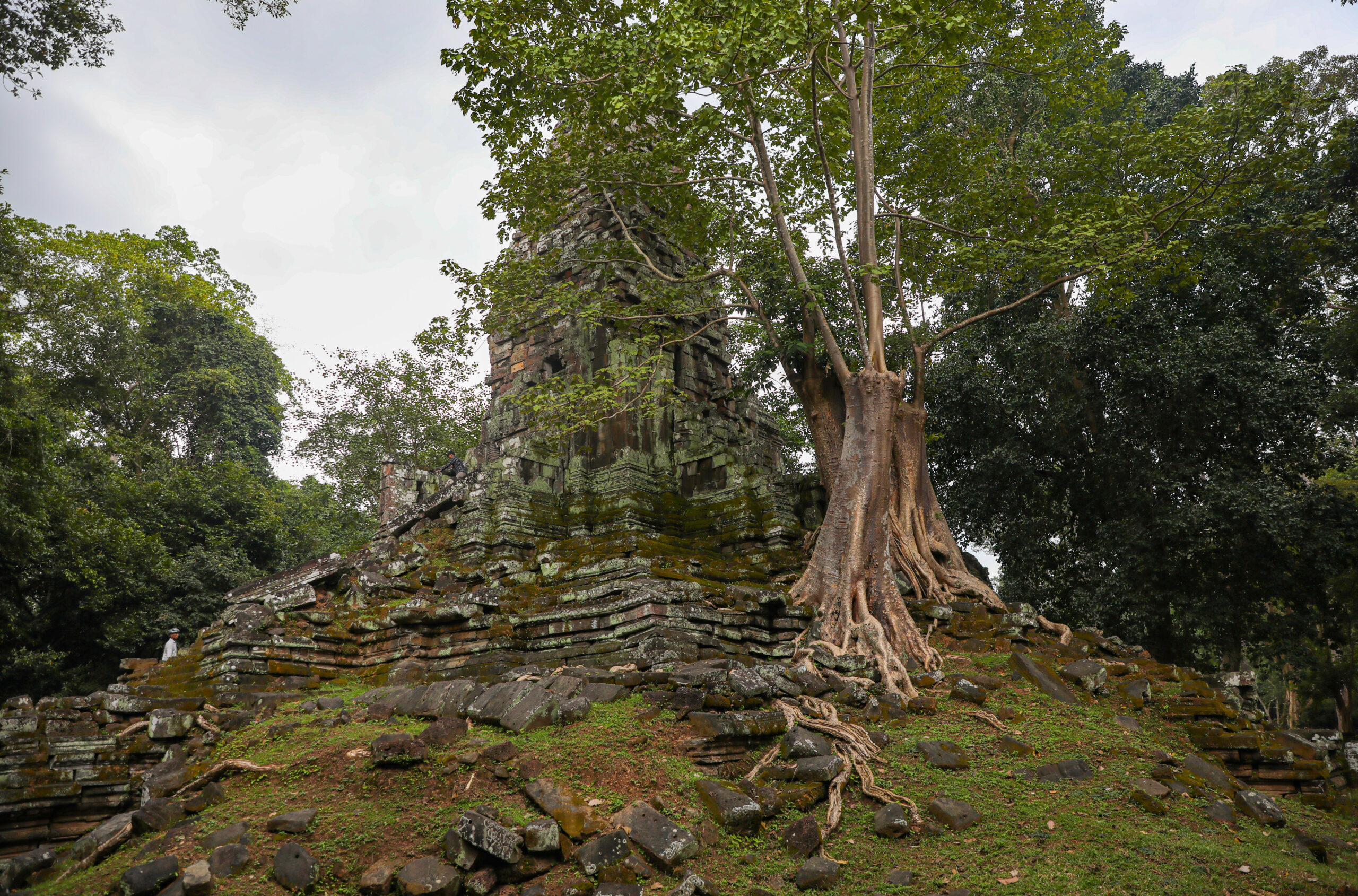
What will be the three main challenges facing Angkor Park in 2022?
The main challenge for us every year is maintaining these temples, which are more than a millennium old. We have to keep updating our management and maintenance practises to ensure the temples are being cared for at the most efficient level. Conservation is an ongoing process. It is not like next month, or next year, we are going to finish and be done. Temples are just like humans. Both get old and need constant care or else they get ruined.
All of these new precaution measures and plans require a lot of resources, especially human resources. If we want to sustain the cultural heritage of Angkor we will need to increase the training of our human resources.
As we reopen to full capacity, it will also be an important challenge for us to make sure all the stakeholders involved in preserving Angkor Park are combining their efforts. This is very critical because Angkor is a very, very big site. There are also communities living in the site, which makes the park a living museum. We all need to work together to have a successful and safe reopening.
This interview was edited for length and clarity.
